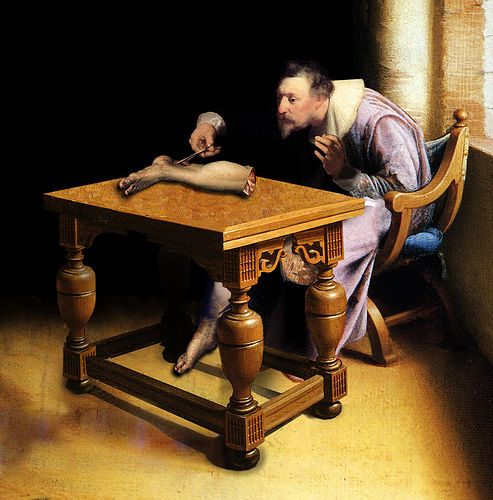I have to admit, I lost the plot. For a brief moment I forgot about the years of contemplations and studies of philosophy and how to live in harmony with myself and the rest on the world no matter the obstacles. Stoicism became in many parts my lifeline. I had books at hand, ready to guide me whenever logic faltered.
It became blatantly apparent yesterday, not in a single event, but lying in bed with a frustrating flu and matters unraveling which I felt too fatigued to even consider. So in my solitude I contemplated. What came to my mind was a particular Flemish scholar – Philip Verheyen, who after having had his leg amputated, had the fortitude to also dissect it and henceforth naming the achiles tendon. It is captured for posterity in a painting of unknown origin (see below).
Now you are probably wondering why on earth am I going on about a man with somewhat morbid inclinations disecting his own amputated leg? Well you see, I came across this case (a while ago) listening to a lecture about stoicism, as one of the tenants is turning something that may be perceived as negative into something positive. Because after al it’s not the event in itself that is positive or negative, only how one choose to look at it. So I conjured up this painting in my head. I had long forgotten the name of the subject, I only knew more or less the painting. And with that it all became abundantly clear…. Once more I should add.
The pain in me slowly subsided and when it popped up so did the imagery of the highly inquisitive, one-legged Meneer Verheyen, turning a traumatic event into something that benefited medicine for centuries to come. So I decided whenever my solemn moods pops up again, I shall turn to Meneer Verheyen…or more accurately…the painting….as a trigger point to remember Shakespeare’s famous words: “There is nothing either good or bad but thinking makes it so.”
Philip Verheyen Dissecting His Amputated Leg. Anonymous.
From the collection of Pieter Deheijde.


